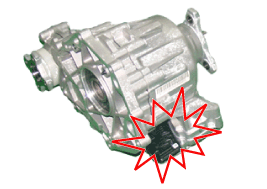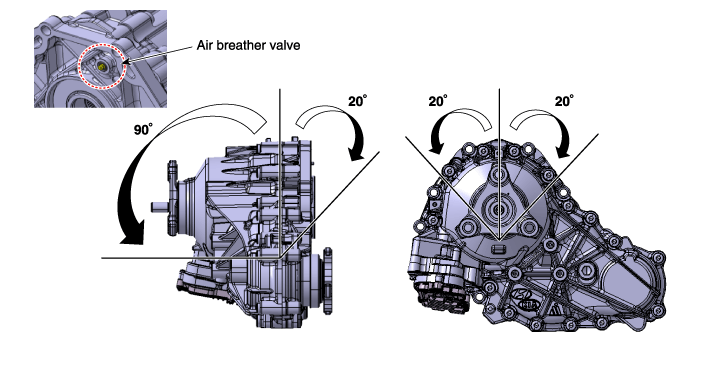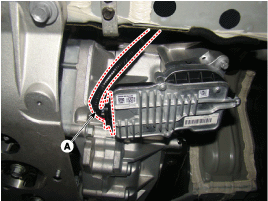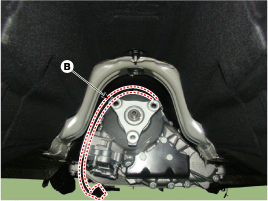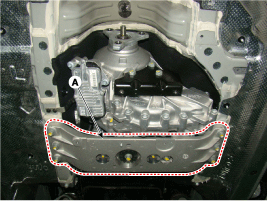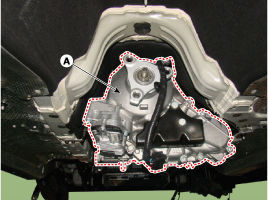Hyundai Genesis: Transfer Assembly / Transfer Case Assembly Repair procedures
Hyundai Genesis (DH) 2013-2016 Service Manual / 4 Wheel Drive (AWD) System / Transfer Assembly / Transfer Case Assembly Repair procedures
| Removal |
In case of replacing the controller (ECU) and transfer case
due to changing characteristics of the frictional materials inside the
transfer case, it is necessary to check and enter the calibration data.
|
Cautions in handling the transfer case
A. Preventing the ITA (Integrated Transfer case Actuator) from damage
1) In case of transporting the transfer case
2) In case of assembling the transmission
B. Preventing the oil leaking
|
| 1. |
Remove the under cover.
(Refer to Engine mechanical system - "Engine room under cover") |
| 2. |
Remove the front propeller shaft
(Refer to Drive shaft and axle - "Propeller shaft assembly" ) |
| 3. |
Remove the rear propeller shaft
(Refer to Drive shaft and axle - "Propeller shaft assembly") |
| 4. |
Remove the wiring (B) fixed on the transfer case after disassembling the transfer case (AWD) ECU connector (A).
|
| 5. |
Remove the cross member (A) after supporting the transmission oil pan by the transmission jack.
|
| 6. |
Unfasten the mounting bolt and remove the transfer case (AWD) (A).
|
| Installation |
| 1. |
Install in the reverse order of removal. |
In case of replacing the controller (ECU) and transfer case
due to changing characteristics of the frictional materials inside the
transfer case, it is necessary to check and enter the calibration data.
|
 Transfer Case Assembly Components and Components Location
Transfer Case Assembly Components and Components Location
Components Location
1. Engine2. Transmission3. Rear differential4. Rear propeller shaft5. Transfer case6. Front propeller shaft7. Front differential
...
 Transfer Fluid Specifications
Transfer Fluid Specifications
Lubricant
ItemDefined lubricantCapacityTransfer oilOil for the transfer case onlyUltra low viscosity of ATF SHELL TF08700.620L(0.165 U.S gal., 0.66 U.S.qt., 0.55 Imp.qt.)
...
Other information:
Hyundai Genesis (DH) 2013-2016 Owners Manual: Drive mode integrated control system
The drive mode may be selected according to the driver’s preference or road condition. The system initializes to the NORMAL mode after the engine has been turned off and on. ✽ NOTICE If there is a problem with the Electronic Stability Control (ESC) system, the drive mode will be ...
Hyundai Genesis (DH) 2013-2016 Service Manual: Front Seat Back Cover Components and Components Location
Component Location 1. Front seat back cover ...
© 2013-2025 www.hgenesisdh.com


